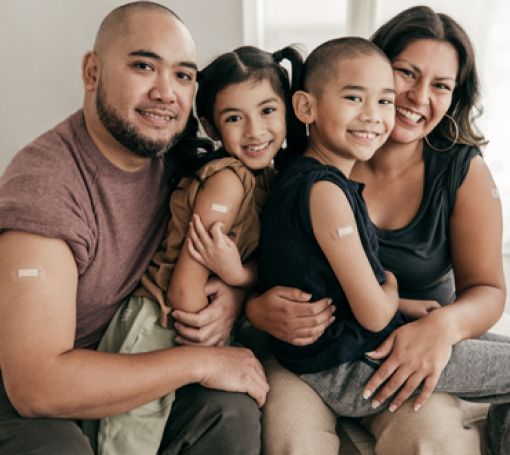What is a sty?
A sty (also called a hordeolum) is a red, painful bump that forms on the eyelid. It happens when a tiny gland near your eyelashes gets inflamed. A sty can make your eyelid swollen and sore. Sometimes, it can look like a pimple.
What is a chalazion?
A chalazion is a bump on the eyelid that is not usually painful. It happens when an oil gland in the eyelid gets blocked. A chalazion may start small but can get bigger over time.
Sty v. Chalazion
How do you treat a sty or chalazion?
Both a sty and chalazion respond well to treatment at home.
Warm Compress
Heat helps open the clogged gland.
- Buy a warm compress or make one by heating a clean sock filled with dry rice in the microwave for 30 seconds.
- Gently hold the compress on your child’s closed eyelid for 5-10 minutes.
- Keep your child still by using a distraction like a favorite video.
- Repeat this 2-4 times a day.
Lid Scrubs
Gentle scrubbing helps remove the clog and massage promotes drainage.
- Put a small amount of baby shampoo (no tears formula) on a warm, wet washcloth as the warmth can help soften the skin.
- Gently rub the closed eyelid back and forth over the eyelashes.
Do over-the-counter (OTC) eye drops help?
OTC drops only help if your child has itchy, watery eyes from allergies, which can make them rub their eyes. If needed, use an OTC 24-hour antihistamine eye drop to reduce itchiness.
Tip for eye drops if your child is nervous:
- Have them lie down and close their eyes.
- Place a drop in the inner corner (near the nose).
- Ask your child to open their eye(s) so the drop can roll in.
- Encourage them to reclose their eye(s) for a few minutes, as blinking can was away the medicine.
Do antibiotics help?
Although normal skin surface bacteria can contribute to the development of styes, antibiotic therapy is not indicated unless infection develops in the eye or skin. It is important to avoid unnecessary antibiotic use to prevent resistance, so they work when really needed.
Your doctor will consider antibiotics (drops, ointment, or rarely oral) if the following develop:
- The eyelid becomes red/swollen beyond the bump.
- The eyeball turns red, and discharge makes the eyelashes stick together.
- Sometimes for recurring styes, if caused by rosacea-associate blepharitis.
- Never for chalazion.
When should my child see a doctor?
- If the bump gets bigger or more painful
- If the bump does not go away after trying compresses
- If vision is blurry
- If the eye is very red or swollen
- If you are worried
What can I do to prevent recurrence?
- Wash your hands regularly.
- Try not to rub your eyes.
- Keep your eyelids clean.
- Remove eye makeup before bed. Refresh every 6 months to avoid bacterial contamination.
- If you wear contact lenses, use disposable, or disinfect daily.
Does my child need to see a specialist?
Eye doctors mainly offer steroid injections or surgery, which are only needed if:
- The bump won’t resolve with eye compresses and lid scrubs (styes > 2 weeks or the chalazions > 2 months)
- The bumps return frequently
- A rare complication occurs
Keep Reading
View All Posts
Drive-Thru Vaccine Clinics
Online scheduling is now available for our Drive-Thru Vaccine Clinics this fall!

Tips for Navigating Flu Season
Getting a flu vaccine is one of the most effective ways to prevent the spread of influenza and reduce the risk of complications.

Drive-Thru Vaccine Clinic Information
Please read these important details before arriving at your Drive-Thru Vaccine Clinic appointment!


